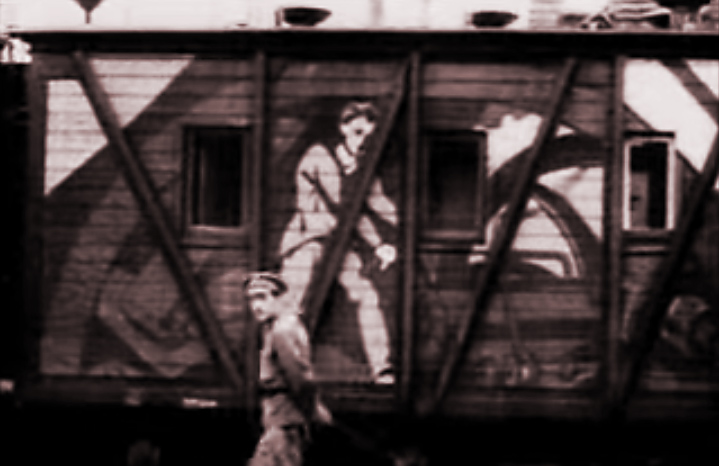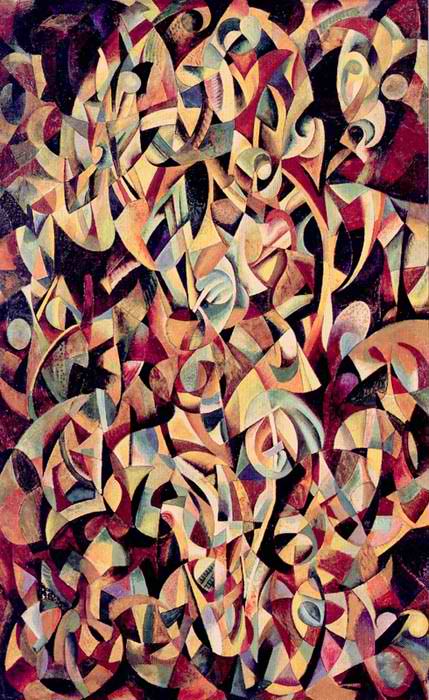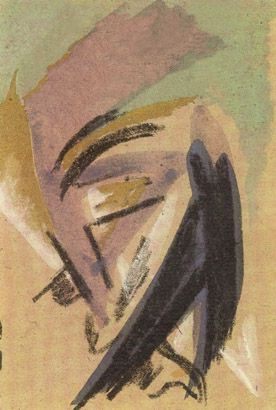|
People's Commissariat For Education
The People's Commissariat for Education (or Narkompros; russian: Народный комиссариат просвещения, Наркомпрос, directly translated as the "People's Commissariat for Enlightenment") was the Soviet agency charged with the administration of public education and most other issues related to culture. In 1946, it was transformed into the Ministry of Education. Its first head was Anatoly Lunacharsky. However he described Nadezhda Krupskaya as the "soul of Narkompros". Mikhail Pokrovsky, Dmitry Leshchenko and Evgraf Litkens also played important roles. Lunacharsky protected most of the avant-garde artists such as Vladimir Mayakovsky, Kazimir Malevich, Vladimir Tatlin and Vsevolod Meyerhold. Despite his efforts, the official policy after Joseph Stalin put him in disgrace. Narkompros had seventeen sections, in addition to the main ones related to general education, e.g., * Likbez, a section for liquidation of illiteracy, * " Profobr", a section ... [...More Info...] [...Related Items...] OR: [Wikipedia] [Google] [Baidu] |
People's Commissariat
A People's Commissariat (russian: народный комиссариат; Narkomat) was a structure in the Soviet state (in the Russian Soviet Federative Socialist Republic, in other union and autonomous republics, in the Soviet Union) from 1917–1946 which functioned as the central executive body in charge of managing a particular field of state activity or a separate sector of the national economy; analogue of the ministry. As a rule, a People's Commissariat was headed by a People's Commissar (russian: народный комиссар; Narkom), which is part of the government – the Council of People's Commissars of the appropriate level. Commissariats were created as central organs of state administration when Soviet power was established in the republics in the territory of the former Russian Empire. The number of People's Commissariats changed in accordance with the requirements of the current moment; overall it increased due to the separation of existing ones and the form ... [...More Info...] [...Related Items...] OR: [Wikipedia] [Google] [Baidu] |
Russian Academy Of Sciences
The Russian Academy of Sciences (RAS; russian: Росси́йская акаде́мия нау́к (РАН) ''Rossíyskaya akadémiya naúk'') consists of the national academy of Russia; a network of scientific research institutes from across the Russian Federation; and additional scientific and social units such as libraries, publishing units, and hospitals. Peter the Great established the Academy (then the St. Petersburg Academy of Sciences) in 1724 with guidance from Gottfried Leibniz. From its establishment, the Academy benefitted from a slate of foreign scholars as professors; the Academy then gained its first clear set of goals from the 1747 Charter. The Academy functioned as a university and research center throughout the mid-18th century until the university was dissolved, leaving research as the main pillar of the institution. The rest of the 18th century continuing on through the 19th century consisted of many published academic works from Academy scholars and a few ... [...More Info...] [...Related Items...] OR: [Wikipedia] [Google] [Baidu] |
Constructivism (art)
Constructivism is an early twentieth-century art movement founded in 1915 by Vladimir Tatlin and Alexander Rodchenko. Abstract and austere, constructivist art aimed to reflect modern industrial society and urban space. The movement rejected decorative stylization in favor of the industrial assemblage of materials. Constructivists were in favour of art for propaganda and social purposes, and were associated with Soviet socialism, the Bolsheviks and the Russian avant-garde. Constructivist architecture and art had a great effect on modern art movements of the 20th century, influencing major trends such as the Bauhaus and De Stijl movements. Its influence was widespread, with major effects upon architecture, sculpture, graphic design, industrial design, theatre, film, dance, fashion and, to some extent, music. Beginnings Constructivism was a post-World War I development of Russian Futurism, and particularly of the 'counter reliefs' of Vladimir Tatlin, which had been exhibited i ... [...More Info...] [...Related Items...] OR: [Wikipedia] [Google] [Baidu] |
Russia
Russia (, , ), or the Russian Federation, is a transcontinental country spanning Eastern Europe and Northern Asia. It is the largest country in the world, with its internationally recognised territory covering , and encompassing one-eighth of Earth's inhabitable landmass. Russia extends across eleven time zones and shares land boundaries with fourteen countries, more than any other country but China. It is the world's ninth-most populous country and Europe's most populous country, with a population of 146 million people. The country's capital and largest city is Moscow, the largest city entirely within Europe. Saint Petersburg is Russia's cultural centre and second-largest city. Other major urban areas include Novosibirsk, Yekaterinburg, Nizhny Novgorod, and Kazan. The East Slavs emerged as a recognisable group in Europe between the 3rd and 8th centuries CE. Kievan Rus' arose as a state in the 9th century, and in 988, it adopted Orthodox Christianity from ... [...More Info...] [...Related Items...] OR: [Wikipedia] [Google] [Baidu] |
Agit-train
An agit-train (Russian: агитпоезд) was a locomotive engine with special auxiliary cars outfitted for propaganda purposes by the Bolshevik government of Soviet Russia during the time of the Russian Civil War, War Communism, and the New Economic Policy. Brightly painted and carrying on board a printing press, government complaint office, printed political leaflets and pamphlets, library books, and a mobile movie theater, agit-trains traveled the rails of Russia, Siberia, and Ukraine in an attempt to introduce the values and program of the new revolutionary government to a scattered and isolated peasantry. Launched in August 1918, agit-trains — and their close counterparts, the urban agit-streetcar (Russian: агиттрамвай), the railway agit-station (Russian: агитпункт), and the aquatic agit-boat (Russian: агитпарaход) — continued in limited use throughout the 1920s. The agit-train concept was revived during the years of World War II as ... [...More Info...] [...Related Items...] OR: [Wikipedia] [Google] [Baidu] |
Wassily Kandinsky
Wassily Wassilyevich Kandinsky (; rus, Василий Васильевич Кандинский, Vasiliy Vasilyevich Kandinskiy, vɐˈsʲilʲɪj vɐˈsʲilʲjɪvʲɪtɕ kɐnʲˈdʲinskʲɪj; – 13 December 1944) was a Russian painter and art theorist. Kandinsky is generally credited as one of the pioneers of abstraction in western art, possibly after Hilma af Klint. Born in Moscow, he spent his childhood in Odessa, where he graduated at Grekov Odessa Art School. He enrolled at the University of Moscow, studying law and economics. Successful in his profession—he was offered a professorship (chair of Roman Law) at the University of Dorpat (today Tartu, Estonia)—Kandinsky began painting studies (life-drawing, sketching and anatomy) at the age of 30. In 1896, Kandinsky settled in Munich, studying first at Anton Ažbe's private school and then at the Academy of Fine Arts. He returned to Moscow in 1914, after the outbreak of World War I. Following the Russian Rev ... [...More Info...] [...Related Items...] OR: [Wikipedia] [Google] [Baidu] |
Alexander Rodchenko
Aleksander Mikhailovich Rodchenko (russian: link=no, Алекса́ндр Миха́йлович Ро́дченко; – 3 December 1956) was a Russian and Soviet artist, sculptor, photographer, and graphic designer. He was one of the founders of constructivism and Russian design; he was married to the artist Varvara Stepanova. Rodchenko was one of the most versatile constructivist and productivist artists to emerge after the Russian Revolution. He worked as a painter and graphic designer before turning to photomontage and photography. His photography was socially engaged, formally innovative, and opposed to a painterly aesthetic. Concerned with the need for analytical-documentary photo series, he often shot his subjects from odd angles—usually high above or down below—to shock the viewer and to postpone recognition. He wrote: "One has to take several different shots of a subject, from different points of view and in different situations, as if one examined it in the roun ... [...More Info...] [...Related Items...] OR: [Wikipedia] [Google] [Baidu] |
Olga Rozanova
Olga Vladimirovna Rozanova (also spelled Rosanova, Russian: Ольга Владимировна Розанова) (22 June 1886 – 7 November 1918, Moscow) was a Russian avant-garde artist painting in the styles of Suprematism, Neo-Primitivism, and Cubo-Futurism. Biography Early life Olga Rozanova was born in Melenki, a small town near Vladimir. Her father, Vladimir Rozanov, was a district police officer and her mother, Elizaveta Rozanova, was the daughter of an Orthodox priest. She was the family's fifth child; she had two sisters, Anna and Alevtina, and two brothers, Anatolii and Vladimir. Rozanova's father died in 1903, and her mother became the head of the household. She graduated from the Vladimir Women's Gymnasium in 1904. Due to her interest in the avant-garde movement, she moved to Moscow to study painting. Artistic career After arriving in Moscow, she attended the Bolshakov Art School, where she worked under Nikolai Ulyanov and sculptor Andrey Matveev. She ... [...More Info...] [...Related Items...] OR: [Wikipedia] [Google] [Baidu] |
Nadezhda Udaltsova
Nadezhda Andreevna Udaltsova (, 29 December 1885 – 25 January 1961) was a Russian avant-garde artist (Cubist, Suprematist), painter and teacher. Early life and education Nadezhda Udaltsova was born in the village of Orel, Russia, on 29 December 1885. When she was six, her family moved to Moscow, where she graduated from high school and began her artistic career. In September 1905 Udaltsova enrolled in the art school run by Konstantin Yuon and Ivan Dudin, where she studied for two years and met fellow-students Vera Mukhina, Liubov Popova, and Aleksander Vesnin. In the spring of 1908 she traveled to Berlin and Dresden, and upon her return to Russia, she unsuccessfully applied for admission to the Moscow Institute of Painting, Sculpture, and Architecture. She also married Alexander Udaltsov, her first husband, in 1908. In 1910–11, Udaltsova studied at several private studios, among them Vladimir Tatlin's. In 1912–13 she and Popova traveled to Paris to continue their studi ... [...More Info...] [...Related Items...] OR: [Wikipedia] [Google] [Baidu] |
Ilya Mashkov
Ilya Ivanovich Mashkov (russian: Илья Иванович Машков; – 20 March 1944) was a Russian artist, one of the most significant and at the same time most characteristic painters of the circle of " Jack of Diamonds" (russian: Бубновый Валет). Biography He was born in the cossack village Mikhailovskaya-on-Don (near Volgograd) in a peasant family. After arriving at Moscow in 1900 he attended the Moscow School of Painting, Sculpture and Architecture, whose teachers included Konstantin Korovin and Valentin Serov. In 1909 he was expelled from the school because of his artistic free thinking. He traveled much as a student, visiting a number of the countries of West Europe, and also Turkey and Egypt. He was the member of associations "Mir iskusstva" (Russian: Мир иску́сства) and " Jack of Diamonds". He lived in Moscow, sometimes visiting his village. His creative work reflected the colour revolution of the 20th century. The artistic innova ... [...More Info...] [...Related Items...] OR: [Wikipedia] [Google] [Baidu] |
Kasimir Malevich
Kazimir Severinovich Malevich ; german: Kasimir Malewitsch; pl, Kazimierz Malewicz; russian: Казими́р Севери́нович Мале́вич ; uk, Казимир Северинович Малевич, translit=Kazymyr Severynovych Malevych ., group=nb (Запись о рождении в метрической книге римско-католического костёла св. Александра в Киеве, 1879 год // ЦГИАК Украины, ф. 1268, оп. 1, д. 26, л. 13об—14. – 15 May 1935) was a ... [...More Info...] [...Related Items...] OR: [Wikipedia] [Google] [Baidu] |
Visual Arts
The visual arts are art forms such as painting, drawing, printmaking, sculpture, ceramics, photography, video, filmmaking, design, crafts and architecture. Many artistic disciplines such as performing arts, conceptual art, and textile arts also involve aspects of visual arts as well as arts of other types. Also included within the visual arts are the applied arts such as industrial design, graphic design, fashion design, interior design and decorative art. Current usage of the term "visual arts" includes fine art as well as the applied or decorative arts and crafts, but this was not always the case. Before the Arts and Crafts Movement in Britain and elsewhere at the turn of the 20th century, the term 'artist' had for some centuries often been restricted to a person working in the fine arts (such as painting, sculpture, or printmaking) and not the decorative arts, craft, or applied Visual arts media. The distinction was emphasized by artists of the Arts and Crafts Move ... [...More Info...] [...Related Items...] OR: [Wikipedia] [Google] [Baidu] |






.jpg)

.jpg)